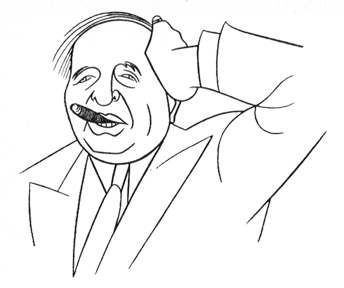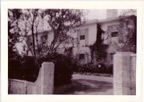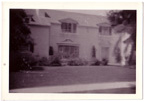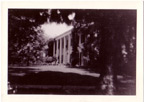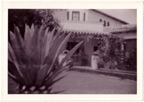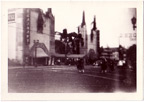SAMUEL HOFFENSTEIN’S CREATION
Tag: Douglas Fairbanks
Cladrite Classics: Jack Benny Slept Here
We were mulling over the other day some of the posts we thought particularly fun that went live in the weeks and months before Cladrite Radio had accumulated much of a readership. Would it be problematic, we wondered, to revisit some of those posts, under the heading of Cladrite Classics?
No, we decided, it would not. Hence the following revisited offering, which first saw the light of day on May 13, 2010:
Though we’re committed New Yorkers, we wouldn’t mind a bit spending a few weeks—perhaps even a few months—a year in Los Angeles. We even find ourselves daydreaming about the City of Angels quite often.
And yet, we came around slowly on L.A. Our first couple of visits were enjoyable enough, but we didn’t find the city particularly engaging. After a trio of week-long sojourns there over the past decade or so, though, we’ve been won over.
We view the city through a movie buff’s eye, primarily, and so spend our time motoring about checking out movie stars’ homes, vintage movie palaces, and locations that were used in the filming of some of our favorite classic pictures (though we’re also happy just puttering through the various old neighborhoods south of the Hollywood hills—we love the residential architecture in old L.A.).
We didn’t snap the photos shared below; we bought them at a flea market some years back. They’re snapshots taken around Hollywood and its environs back in the day. How old they are, exactly, we’re not sure—we’re inclined to think they’re from the late 1930s, but we’re open to guesses from you, gentle readers. (For larger views, just click the images.)
Times Square Tintypes: John Golden
“PURE AS THE DRIVEN SNOW”
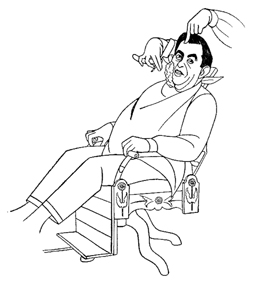 Was once a bricklayer and the vice president of a chemical company. From the experience gained at the latter he is proficient in making gin.
Was once a bricklayer and the vice president of a chemical company. From the experience gained at the latter he is proficient in making gin.Silence is golden
We enjoyed this video tribute to the silent era, and thought we’d share it with you.
The person behind it, Alejandra Espasande Bouza, is an independent filmmaker based in Los Angeles. She holds a B.A. from the USC School of Cinematic Arts and a M.A. in Moving Image Archive Studies from UCLA. and here’s what she has to say about the project:
This video is a tribute to the forgotten pioneer Hollywood cinematographers who captured the moving images of the silent film era. In turn, these images serve as a reminder of the intrinsic beauty and charm of silent cinema, and the importance of its preservation. To that end, and in the tradition of this historic film period, no narration is employed. Apart from film stars of the time, the video showcases scenes that represent main themes of this film period: slapstick, adventure, horror and romance.
Sit back and enjoy the beauty of these moving images edited to the rhythm of Antonio Vivaldi.
Featured actors include: Gloria Swanson, Rudolph Valentino, Greta Garbo, Clara Bow, Charlie Chaplin, Douglas Fairbanks, William S. Hart, Ben Turpin, Harry Langdon, Buster Keaton, Harry Gribbon, Harold Lloyd, Mary Philbin, Lon Chaney and Roscoe Arbuckle.
If you enjoyed this, cast your vote for Ms. Bouza’s work in the MishMash Getty Images Music/Video/Remix competition.
![]()
Watching the stars come out
We have a grand time when we visit Los Angeles (pronounce it “Angle-eez,” with the hard G, if you please). As movie buffs, we get a kick out of just driving around the various neighborhoods and imagining who once lived in the bungalows we’re passing. Lucille Ball, f’rinstance.
Then there are the more substantial residences that the familiar stars of the Golden Age of Hollywood moved into, once they’d hit it big.
In our several trips to Tinsel Town, we’ve never taken one of the commercial tours of the stars’ homes, but we suspect they tend to focus on the abodes of contemporary stars—Tom Hanks, Julia Roberts, Justin Bieber—at the expense of the former residences of your Humphrey Bogarts, your Bette Davises, your Una Merkels. And who can blame them? It’s always good policy to give the people what they want, and we who are more interested in seeing where and how the stars of yesteryear lived are undeniably in the minority.
There are guidebooks that provide pointers that allow us to catch a glimpse of where Bogart, Davis, and Merkel lived, worked, and played, of course (we’re partial to Richard Alleman’s Hollywood: The Movie Lover’s Guide: The Ultimate Insider Tour of Movie L.A.), but what if one doesn’t have the wherewithal (or accrued vacation days) to to arrange a Southern California sojorn?
In that case, one turns, as one tends to do these days, to the internet—specifically to Image-Archeology.com and their collection of vintage linen postcards that depict the residences of those performers who made our parents, grandparents, and great-grandparents laugh, cry and tap their toes (though not simultaneously).
 |
 |
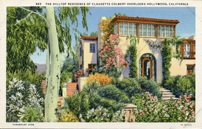 |
| Mary Pickford and Douglas Fairbanks’ home, Pickfair |
Jean Harlow’s Beverily Hills residence | Claudette Colbert’s hilltop residence in Hollywood |
At this delightful site, one can gaze upon a palatial Hancock Park home while imagining Buster Keaton stepping out to pick up the morning paper, compare contrast two of Groucho Marx‘s Beverly Hills homes, and kill two birds with one stone as you assess the love nest once blissfully shared by a pair of stars who were married once upon a time, Dick Powell and Joan Blondell.
And the list goes on—Myrna Loy, Harold Lloyd, Ginger Rogers, Barbara Stanwyck; one could grow breathless reciting them. All the cards, from A to Z (well, A to Y—Loretta Young is the last star on the list) are in terrific shape and lovingly presented. We encourage all our readers to experience a little California sunshine by spending some time there.

